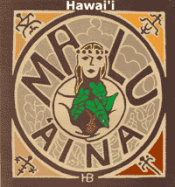For a GMO-Free Hawaii Island
Monday, May 27th, 2013Please send this out to your ‘list’ 😉
Email or Fax every council member with your name and town/city. If you email, attach your comments to make it easier to print. You can also attach supporting documents and studies.
District 1 Valerie Poindexter : Fax: (808) 961-8912
Email: vpoindexter@co.hawaii.hi.us
District 2 J Yoshimoto Fax: (808) 961-8912
Email: jyoshimoto@co.hawaii.hi.us
District 3 “Fresh” Onishi Fax: (808) 961-8912
Email: donishi@co.hawaii.hi.us
District 4 Greggor Ilagan Fax: (808) 965- 2707
Email: gilalan@co.hawaii.hi.us
District 5 Zendo Kern Fax: (808) 961-8912
Email: zkern@co.hawaii.hi.us
District 7 Dru Mamo Kanula Fax: (808) 329- 4786
Email: dkanuha@co.hawaii.hi.us
District 8 Karen Eoff Fax: (808) 329-4786
Email: keoff@co.hawaii.hi.us
Talking Points and Topics:
– Refute pro-GMO testimony that there is no credible research to show GMOs cause harm; include research documents. A good place to start researching this is the World Scientists Statement to all governments to cease the planting of GMOs , with a list of research-backed concerns as to why.
– Data on the cost of GMO contamination. A good source is the UCS report on contamination: “Gone to Seed”
– How GMOs create a diminishing future in agriculture: increase in seed cost, poisoned land/water.
– Refute the claims made by biotech that their technology improves yields. A good source is the UCS 2009 study Failure to Yield
– Refute the opposition’s one-sided “freedom for farmers” argument. The Council needs to see the side of using scientific caution; The Precautionary Principle is good science. It’s okay to take risks, but only if you are allowed to conduct non-biased and long term safety studies to know what the percentage of the risk is. This is the standard for new medicines, including gene therapy. This has not been done for these gene event food crops.The FDA is not actually regulating this technology; it’s considered the same as normal crops as far as they are concerned. It’s called the “substantial equivalent”. Meanwhile, testifiers in Hilo said “GMOs are the most regulated agriculture technology”, so the myth of true oversight continues… By creating obstacles to independent research on its products, Monsanto makes it harder for farmers and policy makers to make informed decisions that can lead to more sustainable agriculture.
– How Council members have not yet been bought by biotech money, still able to do right.
– Harm to `aina of accelerating use of increasingly toxic chemicals for GMO crops due to resistance of insects and weeds; include documents.
– Contamination events such as rice, Mexican corn varieties and papaya
– Hawaii Island is the last refuge from GMO in the state.
– Sustainability can provide the greatest variety of food vs. GMOs, resistant insects and contamination problems. Biotech companies even marginalize their own results that show that classical breeding, and not GMO, creates desirable traits such as more yield and drought resistance.
– If you are pressed for time, just send a message with name and town and that you support Bill 79.
PRO-GMO VIDEO TESTIMONY:
Alicia (biotech lobbyist) http://www.youtube.com/watch?v=-BwsMWvfCE0
Susan Miyasaka (UH agronomist) http://www.youtube.com/watch?v=QhMXghCQ2qU
Eric Weinert (papaya irradiator) http://www.youtube.com/watch?v=y2jtaemy-zU
Ashley Stokes (UH veterinarian) http://www.youtube.com/watch?v=zzWT2XZbOBE
Papaya Guy http://www.youtube.com/watch?v=2ijZNJ-5-U4
We are a coalition of residents of the Hawaii Island of Hawaii standing together to stop and prevent GMO farming on our island, as well as to support alternatives and healthier opportunities to GMOs and industrial agriculture in general. We ask that all districts of this island form local groups and work together as a whole with us to promote our stated goals.
Join the Conversation and Get Involved
GMO’s are a complex issue, and have many different facets on how they affect people’s lives, especially in the State of Hawaii. We know this is a grassroots effort –and that means getting people from all walks of life and parts of the island to offer their perspective and mana’o. There are many ways to approach the “on the ground” education in different parts of society (like schools, farms, food stores, etc.). We encourage you to get involved, see how you can help, and what may be beneficial to the movement to remove GMOs from the environment. We have a GMO Free Hawaii Island discussion group created that you can ask to join that will be open to view by the public and searchable. It will thus be an open source for information sharing and networking of people involved in the movement. If you would like to join, you can send an email to gmofreebigisland@gmail.com and put “discussion group” in the title. Please provide a brief introduction as to who you are, what part of the island you hail from, and how you want to contribute. We need to make sure spammers don’t get on the group and take it over, so thank you so much for that. If approved, you will be added to the conversation in 2 days or less. Thank you so much for participating, and we look forward to your ideas and working with you.
Jim Albertini Malu ‘Aina Center For Non-violent Education & Action P.O. Box AB Ola’a (Kurtistown) Hawai’i 96760 Phone 808-966-7622 Email ja@malu-aina.org www.malu-aina.org
